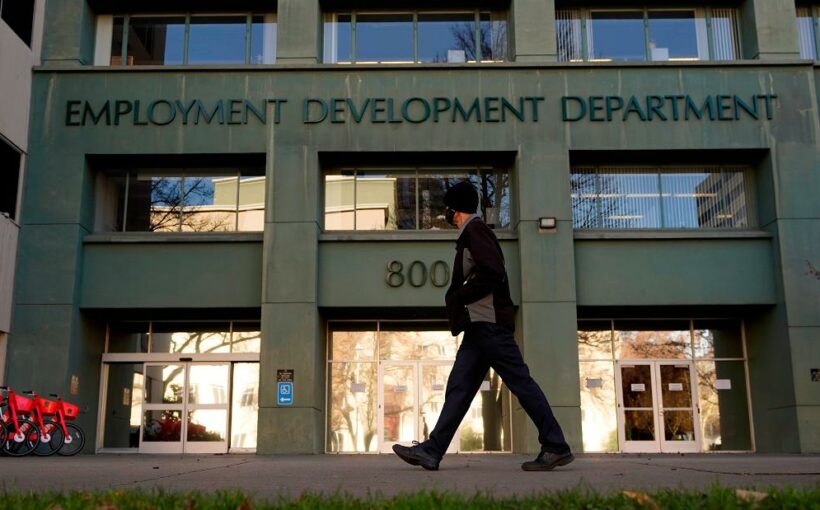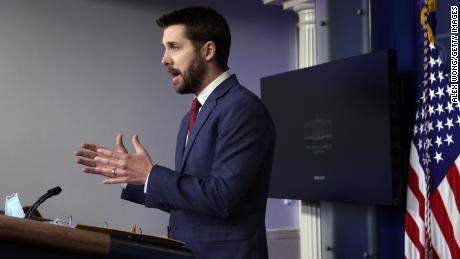New York (CNN Business)The January jobs report may turn out to be one of the worst, and most confusing, since Covid turned the world upside down in early 2020.
Economists, and even the White House, are warning that Friday’s report will likely show a sharp slowdown in payroll growth. Multiple major banks are even projecting an outright decline of hundreds of thousands of jobs.
If these gloomy forecasts prove accurate, it won’t signal the jobs market is falling off a cliff and layoffs are suddenly rampant in the world’s largest economy.
Everything indicates this is going to be a one-month thing. We should see job growth bounce back in February."
PNC chief economist Gus Faucher
Much of the trouble stems from when — and how — the government conducts its surveys. And there is ample evidence suggesting the labor market will get back on its feet, swiftly.
“The jobs report is going to be a royal mess,” said Joe Brusuelas, chief economist at RSM. “But anyone who plays this up is not worth their salt as an economist or analyst.”
It’s crucial to remember that the Bureau of Labor Statistics took the survey during the second week of January — when Omicron was running wild. Since then, thankfully, Covid-19 cases have plunged.
Who gets counted as employed and who doesn’t
Not only is the timing key here, but so is how workers are counted by the BLS.
To be considered employed in the survey, workers must have either A.) worked or B.) received pay for at least part of that week.
That means employees who stayed home but did not get sick pay will not be counted as employed in the jobs report. That includes people who got Covid, were worried they would get Covid, had to isolate, couldn’t find childcare or had to take care of someone who was ill.
And Omicron sidelined a considerable amount of people. A Census Bureau survey conducted during the first 10 days of January found that an estimated 12 million people were not working because they were sick, taking care of someone who was or fearful of getting sick.
Here’s the key line from the BLS website explaining how employment is defined: “Employment is the total number of persons on establishment payrolls employed full- or part-time who received pay (whether they worked or not) for any part of the pay period that includes the 12th day of the month.”
‘The have-nots took a hit’
Here’s an example: A restaurant server who didn’t have any shifts that week because they were isolating would not be counted by the government as employed. But that waiter or waitress was not laid off. In fact, given the ongoing worker shortage, that restaurant in all likelihood badly needed this hypothetical server to get back to work ASAP.
“They are not laid off. They are not fired. They are counted as not working because they were sick,” Brusuelas said.
And this is especially true among lower-wage workers, some of whom may not have been eligible for sick pay.
“This really is a haves versus have-nots report. The have-nots took a hit during the worst of Omicron,” said Brusuelas.
The consensus among economist is for January payrolls to be up by just 150,000 jobs. Goldman Sachs, however, is forecasting a decline of 250,000 jobs. PNC sees an even bigger loss of 400,000 jobs.
The last time payrolls declined in any month was December 2020, when they tumbled by 306,000 jobs. A decline larger than that would be the worst since April 2020 at the height of the pandemic.
Jobless claims are already retreating
The good news is that Covid cases have declined sharply since the second week in January. And that suggests payrolls will bounce back sharply.
“There are one-time factors that will result in job losses in January, but the jobs market is still very strong and employers are still adding jobs,” said PNC chief economist Gus Faucher.
There is evidence suggesting the rebound may have already begun.
The Labor Department said Thursday that initial jobless claims dropped to a lower-than-expected 238,000 in the week ending January 29. That marks the second-straight week of sharp declines.
The four-week moving average for continuing claims tumbled to the lowest level since 1973.
The fact that initial claims have declined steadily comes as a relief because during the peak of Omicron claims rose to three-month highs. Now, Omicron’s impact on the jobs market appears to be fading away.
“Everything indicates this is going to be a one-month thing. We should see job growth bounce back in February,” said Faucher.
Many businesses are desperate to hire
By all accounts, demand for workers is very strong.
The United States had a near-record 10.9 million job openings in December, according to the government’s Job Openings and Labor Turnover Survey, or JOLTS.
Not only that, but the number of Americans quitting their jobs that month totaled 4.3 million. That’s just shy of November’s tally of 4.5 million quits, the highest since the report began tracking this in late 2000.
Companies are so desperate to fill vacant positions that Home Depot just announced it will aim to make job offers within one day of receiving applications.
Against this backdrop, Biden officials are voicing confidence that the jobs market will get back on track very soon.
“We are not concerned,” Commerce Secretary Gina Raimondo told CNN’s Bianna Golodryga on Thursday. “I wouldn’t be surprised at all if this month were …a blip.”
Time will tell, but that may very well be the case.
Source: Read Full Article




